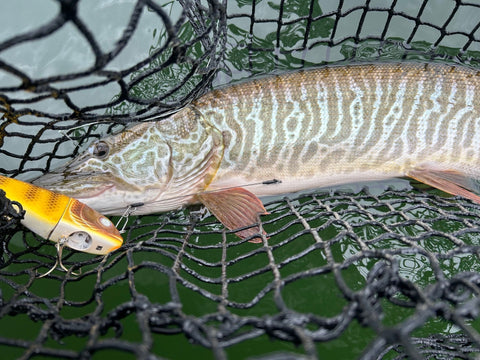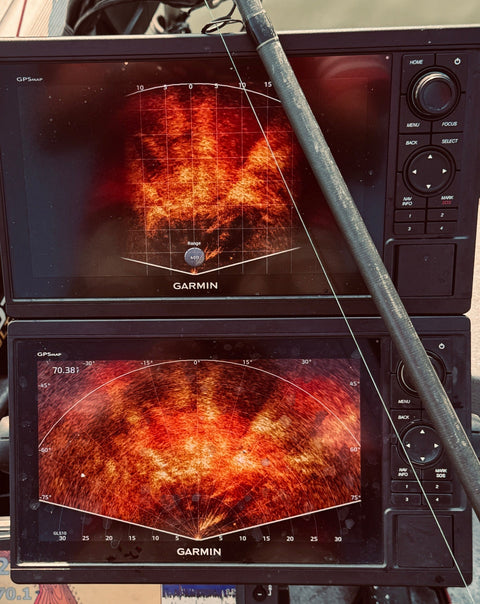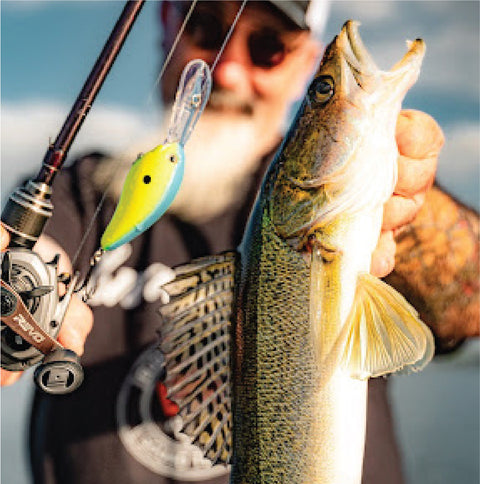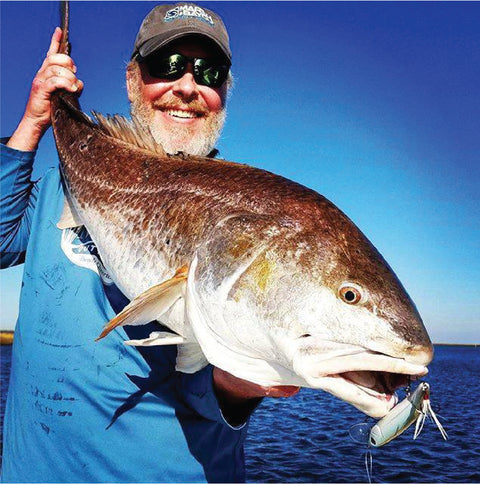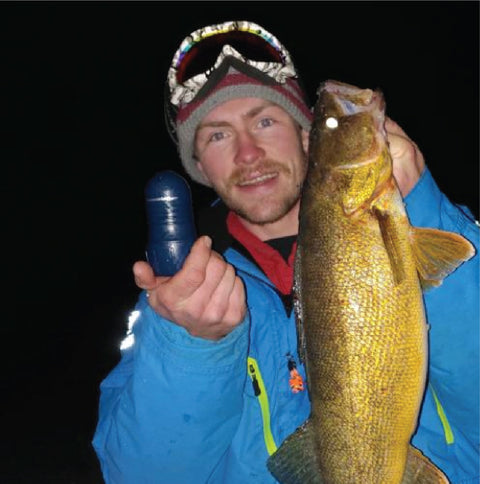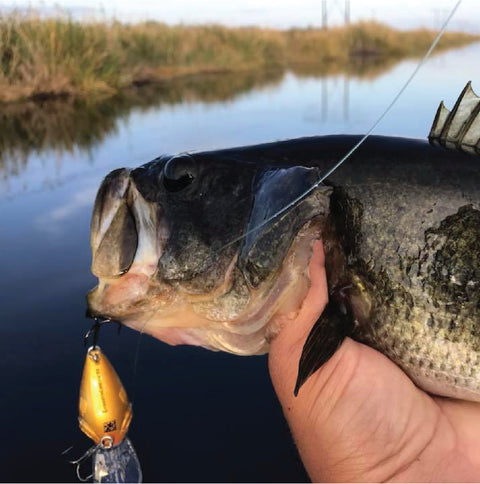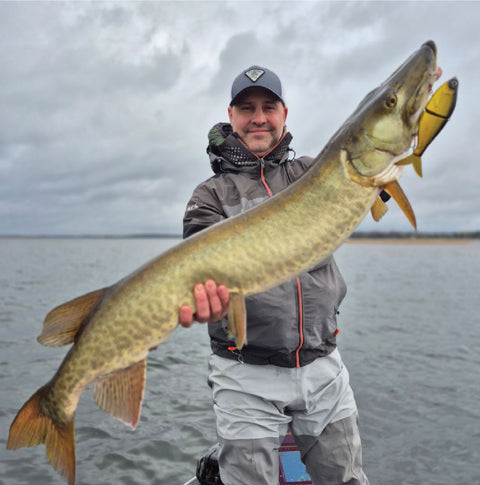Wyoming Tiger Muskie Fishing: Where to Find and How to Catch the Cowboy State’s Top Predator

Tiger muskies are among the most thrilling freshwater predators in North America. In Wyoming, these apex fish have been strategically stocked by the Wyoming Game and Fish Department (WGFD) to provide trophy angling opportunities and control invasive rough fish like suckers and carp. The result? A unique, overlooked fishery that’s quietly become one of the most exciting destinations in the West for toothy predators.
Whether you're a seasoned musky hunter or just getting started, here's what you need to know to chase tiger muskies in Wyoming.
What Is a Tiger Muskie?

Tiger muskies are a sterile hybrid between a northern pike and a muskellunge. These fish combine the raw power of a pike with the cunning, elusive behavior of a musky. Tigers grow quickly, often exceeding 40 inches within just a few years. Their vivid, barred patterns make them one of the most strikingly beautiful—and photogenic—predators in freshwater.
Because tiger muskies cannot reproduce, all populations are managed through stocking, making every fish a product of careful planning and conservation.
Top Tiger Muskie Waters in Wyoming: Where to fish for Tiger Musky Wyoming
The Wyoming Game and Fish Department (WGFD) manages tiger muskie populations in select reservoirs with abundant forage fish and suitable habitat structure to support these predatory, sterile hybrids of northern pike and muskellunge. Stocked to control species like carp and perch, tiger muskies offer anglers exciting fishing opportunities. As of 2025, based on verified WGFD stocking data, here are Wyoming’s top tiger muskie hotspots:
1. Middle Depression Reservoir
Located near Shoshoni, this reservoir has been stocked since 2015. The reservoir’s forage base, including bluegill and green sunfish, supports tiger muskies allowing them to grow large and subsequently control prey populations. Target weed beds and drop-offs where tiger muskies ambush prey.
2. Lake Cameahwait
Also known as Bass Lake, near Boysen Reservoir, Lake Cameahwait has been stocked with tiger muskies since 2015. The lake’s largemouth bass and yellow perch provide a robust forage base, and tiger muskies can be targeted near structure like weed beds and points, especially in cooler months.
3. Badwater Pond
Located 3.5 miles north of Shoshoni, Badwater Pond has been stocked with tiger muskies since 2015 to reduce juvenile carp populations. By 2020, sampled fish reached up to 37.5 inches, with some qualifying for the WGFD’s Master Angler Program (38 inches). The pond’s small size and abundant carp and sunfish make it a prime lake for tiger muskies, particularly in fall when they are more active near shallow structures.
Fishing Notes
-
Regulations: WGFD regulations allow harvesting one tiger muskie over 36 inches statewide, ensuring fish grow large enough to serve their ecological role. Check the latest WGFD fishing regulations for updates.
-
Tips: Target tiger muskies in spring or fall using large lures or live bait near ambush points like weeds, drop-offs, or inlet channels. Early morning or late evening fishing maximizes success due to their low-light feeding habits.
-
Access: All three waters are public access areas managed by WGFD. Consult WGFD’s interactive fishing guide for directions and additional details.
These waters have been supported by consistent WGFD stocking since 2015 and stand out as top destinations for tiger muskie fishing in Wyoming, offering anglers a chance to catch trophy-sized fish while aiding fishery management goals.
Best Times to Fish for Wyoming Tiger Muskies
Tiger muskies follow classic seasonal patterns:
- Spring (May–June): Post-spawn tigers feed aggressively in shallow cover. Water temps in the mid-50s to low 60s are ideal.
- Summer (July–August): Early morning and late evening near deep weed edges or inflows are your best bets.
- Fall (September–October): Cooling water triggers a major feeding push. Big tigers roam more freely and will chase larger baits.
Best Lures for Wyoming Tiger Muskies
#1 Dirty Dancer
 The DIRTY DANCER boasts the most intense action and vibration ever designed for tiger muskie fishing. Its dished-out nose and extended, jointed body generate a wild, aggressive shimmy and vibration, producing an erratic, irresistible action perfect for tiger muskie, pike, and true muskie.
The DIRTY DANCER boasts the most intense action and vibration ever designed for tiger muskie fishing. Its dished-out nose and extended, jointed body generate a wild, aggressive shimmy and vibration, producing an erratic, irresistible action perfect for tiger muskie, pike, and true muskie.
Cast the Dirty Dancer in shallow cover or along shorelines, or troll it in open water to unleash an action that tiger muskies can’t resist. Built to perform in any situation or season, the Dirty Dancer is crafted to land tiger muskies in your net.
#2. Big Makk

The BigMakk elevates topwater fishing for tiger muskie with its innovative No Roll lip cut design, acting as a keel to ensure perfect stability even at high speeds when targeting tiger muskie. Combined with its counterclockwise-rotating tail prop, the BigMakk delivers unmatched sound, action, and hard-hitting strikes that tiger muskies can’t resist. No other lure sounds like, runs like, or triggers tiger muskies as aggressively as the BigMakk when pursuing tiger muskie.
#3. Kamakaze
 The Kamakaze is the ultimate chatterbait for tiger muskie fishing. This precision-crafted lure is a fine-tuned tiger muskie-catching machine, perfect for anglers of all skill levels. The Kamakaze delivers a powerful, violent thump that provokes aggressive strikes from tiger muskies and other predatory fish. Its intense vibration draws in tiger muskies from afar, turning even the most lethargic fish into biters. Designed to maintain its signature thump during high-speed figure-eight maneuvers, the Kamakaze features a custom big blade with unique octagonal holes for erratic movement, even at low speeds. Paired with an embellished skirt and fluttering tail, it creates a lifelike presence in the water. The Kamakaze excels in pressured waters, making it an ideal choice for triggering strikes from wary or sluggish tiger muskies.
The Kamakaze is the ultimate chatterbait for tiger muskie fishing. This precision-crafted lure is a fine-tuned tiger muskie-catching machine, perfect for anglers of all skill levels. The Kamakaze delivers a powerful, violent thump that provokes aggressive strikes from tiger muskies and other predatory fish. Its intense vibration draws in tiger muskies from afar, turning even the most lethargic fish into biters. Designed to maintain its signature thump during high-speed figure-eight maneuvers, the Kamakaze features a custom big blade with unique octagonal holes for erratic movement, even at low speeds. Paired with an embellished skirt and fluttering tail, it creates a lifelike presence in the water. The Kamakaze excels in pressured waters, making it an ideal choice for triggering strikes from wary or sluggish tiger muskies.
How to Catch Wyoming Tiger Muskies: Tactics That Work
Tiger muskies demand precision, persistence, and power. Here’s how to increase your odds:
Understand Tiger Muskie Behavior
Tiger muskies are ambush predators that favor structure—weed lines, submerged timber, drop-offs, and inflows. They’re especially reactive to injured or erratic prey movements and often follow lures before striking. Tiger Muskies will wait until low light periods or cloudy skies before moving shallow to feed.
Use the Right Tackle
- Rod: 8’6”–9’6” heavy or extra-heavy casting rod
- Reel: Baitcaster with at least 20 lbs of drag
- Line: 80–100 lb braid + 130–150 lb fluorocarbon or wire leader
- Net: A large, deep musky-rated net with a rubber coating
Fish Smart
- Use long pauses as tiger muskie often strike during the hang.
- Work transition zones—weed edges, drop-offs, timber.
- Watch wind direction—bait often stacks on windswept banks.
- Finish with a figure-8—many strikes happen boatside.
Tiger Muskie Fishing Regulations in Wyoming
Wyoming mandates catch and release for tiger muskies under 36 inches, with a daily limit of one fish over 36 inches. Still, most musky anglers practice 100% catch and release. Use heavy gear, quality nets, and long pliers or hook cutters to protect fish during release.
Wyoming The Great Tiger Muskie Frontier
Wyoming isn’t typically mentioned in musky conversations—but that’s changing. With lightly pressured waters, growing tiger muskie populations, and breathtaking Western backdrops, the Cowboy State is one of the best under-the-radar fisheries in the country.
Whether you’re chasing your first tiger or seeking new territory, Wyoming’s tiger muskie waters are a frontier well worth exploring.
Learn How to Catch Muskies, Pike and Tiger Muskies
Next Level Musky Fishing by Steven Paul
Tiger Muskie Fishing FAQ
What is a tiger muskie?
A sterile hybrid between a muskellunge and northern pike. Fast-growing, aggressive, and visually distinct with barred markings.
Where are tiger muskies found?
Tiger muskies are stocked in lakes and reservoirs across the U.S., including Wyoming, Colorado, Utah, Washington, and other states. Natural reproduction of tiger muskies occurs in locations such as Wisconsin, Minnesota, and parts of Canada. Conditions for natural tiger muskie reproduction are often triggered by water temperature shifts during the spawning periods of northern pike and muskellunge. Sudden changes in conditions can cause muskellunge and pike to spawn in the same areas simultaneously, leading to the creation of hybrid tiger muskies.
How big do tiger muskie get?
Often 30–45 inches, but 50+ inch fish are possible. They grow faster than either parent species.
Are tiger muskies hard to catch?
Tigers can be slightly more aggressive than muskies, but they still require skill, patience, and persistence.
When is the best time to catch tiger muskie?
- Spring (May–June): Shallow post-spawn bite
- Fall (Sept–Oct): Feeding push before winter
- Summer: Dawn and dusk are most productive
What gear do I need for tiger muskie fishing?
- Heavy musky rod (8’6”–9’6”)
- Baitcaster with 80–100 lb braid
- Fluoro or wire leader (130+ lb)
- Deep, rubber-coated musky net
Do I need a special license?
No special musky tag—just a valid state fishing license. Always check local regulations before fishing.
Can I eat tiger muskie?
They’re edible, but rarely harvested. Most anglers practice catch and release to preserve this rare trophy fish.
Can I catch them from shore?
Yes. Early and late hours around points, weed lines, and inflows often produce shore-side action. When shore angling be sure to have a proper landing net and release tools.
Why are tiger muskie stocked in Wyoming?
To control invasive fish populations and create trophy angling opportunities in non-native waters.
How do I release tiger muskie safely?
- Keep fish in the water
- Use long pliers/hook cutters to remove hooks.
- Support fish horizontally
- Revive fully before release
What makes tigers different from pike or musky?
- Hybrid vigor = faster growth
- Distinct vertical bars
- Sterile = stocked only
- Highly adaptable to Western reservoirs



